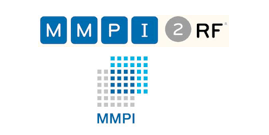

at the University of Minnesota, knows a lot about the test’s history. Why did Hathaway and McKinley create the MMPI?īen-Porath, who worked on the first major revision (known as the MMPI-2) in the late 1980s while earning his Ph.D. I wanted to find out more about the MMPI’s history and the significance of this latest revision, so I spoke with two experts with deep knowledge about the test and its history, Yossef Ben-Porath, professor of psychological sciences at Kent State University and one of the leaders of the test’s latest revision and Katie Nickerson, test division manager at the University of Minnesota Press. An additional 3,400 individuals were tested for the purpose of developing new norms for the MMPI-3. The update is a major, years-long project: The research team discussed ways to add and rephrase test questions, and then set out to collect sample data from more than 16,000 people in mental health, medical care, forensic and public safety settings as well as 8,000 college students. The goal of the update was to refresh the MMPIs contents in order to ensure accuracy and effectiveness for a modern population and to keep up with developments in the field of psychology. This past fall, the University of Minnesota Press published the MMPI-3, the first full revision of the test in more than 30 years. McKinley, head of the university’s neuropsychiatry department. Over the decades, the MMPI has undergone three major revisions, but in many ways has remained quite similar to the original test, which was developed by two University of Minnesota faculty members, Starke Hathaway, a clinical psychologist and J.C.

The test, which requires participants to answer a set of true-false questions designed to measure potential symptoms of mental illness or personality disorder, has been used by mental health professionals, substance abuse programs, schools and public safety employers, among others. Introduced nearly 80 years ago, the Minnesota Multiphasic Personality Inventory (MMPI) continues to be one of the most widely used psychological tests in the world.


 0 kommentar(er)
0 kommentar(er)
